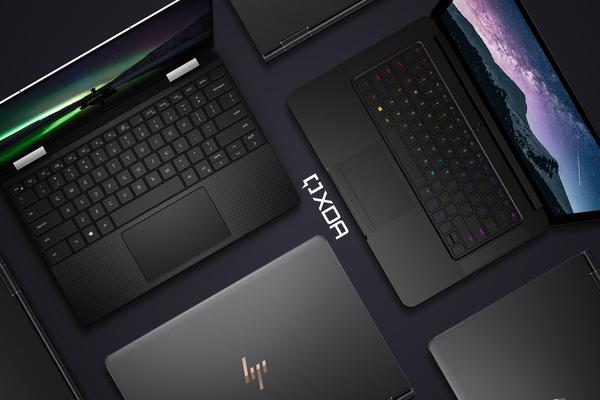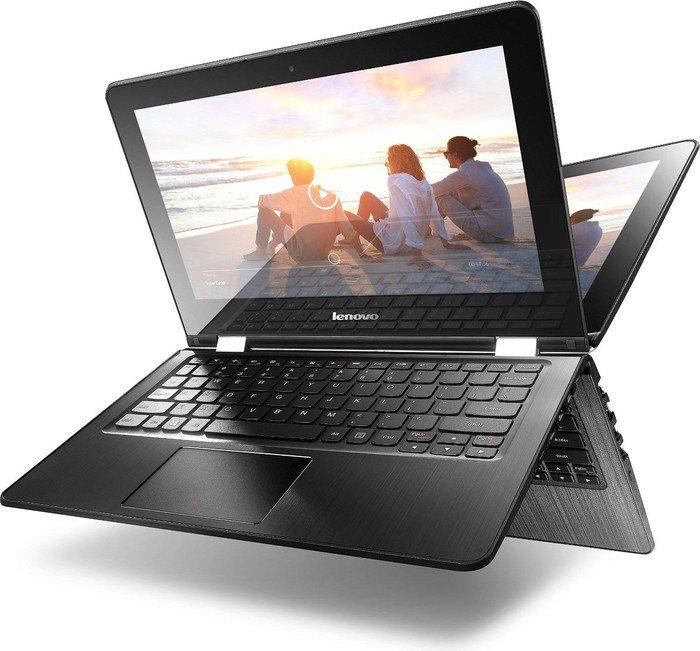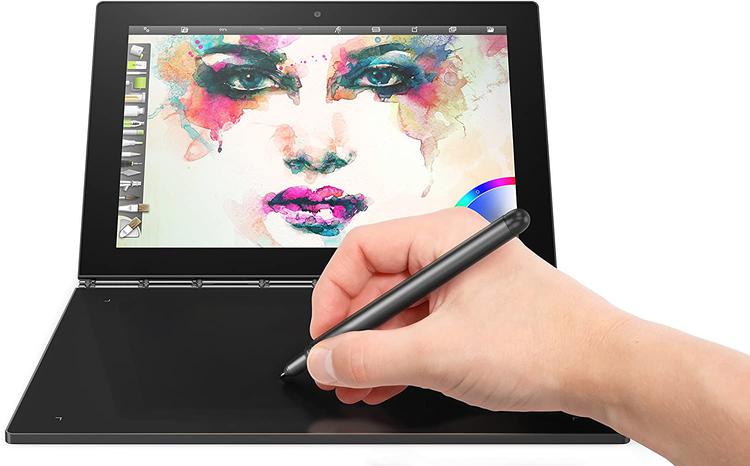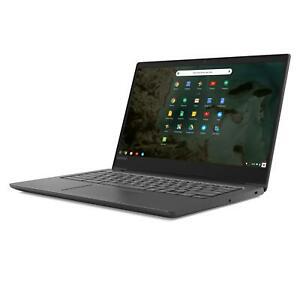In terms of innovation, few core technologies can match the history and persistence of new display technologies to inspire us. From CRT to LCD, from VGA resolution to 4K (and coming soon
continue to 8K
) a procession of increasingly stunning TV and computer screens has swept through our homes over the years. Which brings us to one of the most recent advances: OLED.
The OLED screen technology was the latest big feature in
modern tv
, offers stunning colors, deep blacks and an amazing overall picture quality. It is also shown on top-of-the-line latest generation smartphones from Apple and Samsung. So, very large screens and very small screens have seen the rise of OLED, but those in the middle, in Laptops and on desktops? Not so much...until now.
The technology is finally reaching laptop displays in a modest stream, and 2021 looks like the year that OLED will finally gain laptop momentum, based on
some trends in the manufacture of OLED panels
gaining momentum this year. On the laptop side, however, the thinking is a bit different. While you want TVs to look their best for movies and shows, the use case is different than that of a computer. PCs aren't just for consumption of content, but also designed for content creation, and laptops have to take care of this annoying necessity.
battery life
.All of this is changing the way the screen technology works with the product, which leads me to the question I want to answer: Should you buy an OLED laptop? Let's dig in.
What is OLED anyway?
To answer that, I'll first go into the details of OLED screens and what benefits they're supposed to bring. For starters, OLED stands for "Organic Light Emitting Diode"; more on that in a moment. The short explanation is that OLED technology similar to traditional LED technology - the same concept of light-emitting diodes - but instead of the screen, which uses only semiconductors to generate light, it uses organic molecules (the "O" in OLED). The end result is brighter screens with more vivid colors, hence the appeal of using it in TVs and computers. In general, OLEDs also tend to use less power, all else being equal.
If you're interested, here's a slightly more technical explanation. The different types of LCD screens - which you've become accustomed to in most laptops and TVs over the past decade - whether they're TFT, VA or other technologies all share a similar theme Basic concept. They use a white LED backlight source that pushes light through filters. This light is controlled at the pixel level by liquid crystals in various states and orientations, thereby blocking or tinting the light to create pixels of the desired color. Simply put, use OLED -Screens use a different display paradigm: an organic compound that is self-emitting in terms of light, allowing each pixel in the panel to have its own
own
lights up when power is applied.
Razer Blade 15 Advanced model, OLED version (Photo: Zlata Ivleva)
This is the main difference to LCD screens and allows them to produce particularly brilliant colors and deep blacks. In particular, OLEDs offer "truer" blacks than other mainstream display technologies when displaying a dark or completely black image. When an LCD panel When displaying black, light is still being pushed behind the pixels in the game, but they are closed to present your eyes with a dark space. With OLED screens, the individual pixels on the parts of the screen that display black really do not display anything, so no light from leaks out the back to dilute the darkness. This in turn offers better contrast and deeper blacks than simply filtering out a ubiquitous LED backlight.
All of this also allows for a panel to be more efficient and therefore thinner. This doesn't come into play as dramatically with laptops as it does with OLED TVs; many OLED TVs are almost wafer-thin.
Should you buy an OLED laptop?
Of course, all this beauty comes at a price. OLED laptop configurations are more expensive than traditional display options, and the OLED screen option will often only be included in the most expensive variant of a laptop family. Part of this increase in cost is that this new wave of laptop OLED panels—
all made by Samsung
at this point – are all
4K resolution screens
, further increasing the price by requiring appropriate supporting components. This is also why OLED is typically the top model of a given laptop family. A native 4K resolution and cutting-edge display technology represent the premium version of any device .
If you're interested in an OLED display but aren't sure you can justify it, you could base your decision on the simple fact that they're incredible to look at for the reasons outlined above. OLED isn't essential, but it is Neither does 4K resolution, and many tech features start out as luxuries before becoming standard. If you're buying a new panel in 2021, adopting a technology that's only going to become more popular is a sound decision, and most OLED Panels we've seen look superb. If you're thinking of buying a screen just because it makes watching videos, playing games, and even staring at your desktop look great, we can't disagree Whether or not the additional costs are worth it is up to you and your budget.
Asus ZenBook Pro Duo: The top screen is an OLED.(Photo: Zlata Ivleva)
However, certain types of users should consider some more detailed pros and cons. Gamers will enjoy stunning graphics, and the fantasy and sci-fi settings of many titles are ideal for deep blacks and vivid colors. However, virtually no laptop hardware is made for the 4K playback at 60 frames per second, so most gamers will have to drop the resolution down to 1440p or 1080p. It's not the end of the world, as you can still view other content in 4K, but you're paying for the 4K resolution extra to get OLED, as the two have been intertwined in laptops so far. Not gaming at your laptop's native resolution might feel like a waste to some, but by the looks of it, that could be a price to pay for an OLED panel be.
There's also the issue of refresh rate. An increasing proportion of modern gaming laptops are starting out with 120Hz, 144Hz, or even 240Hz displays to display more frames per second in competitive games. This first wave of 4K OLED panels are locked at 60Hz, and going higher in the future will only cost more money. A 60Hz refresh rate suits AAA titles well, where looks are more important than frames, but many gamers play both blockbusters along big budget as well as the hottest battle royale or MOBA. It's another compromise you have to make for the image quality, good as it is.
Gigabyte Aero 15 OLED XC (Photo: Zlata Ivleva)
Consider some of the nuances, too. Being 4K, it takes a top-of-the-line GPU to hit frame rates in excess of 60 frames per second (fps), certainly at 4K and high detail settings on many modern AAA titles. In practice, if you play the world's Far Crys and Battlefields and you have a GeForce RTX 2070 or RTX 2080 GPU yourself, you can't expect to hit 120 fps or 144 fps at 4K and high detail settings anyway. Even the laptop -2021 GeForce RTX 30-series GPUs are going to take a beating. So the screen's 60Hz refresh rate doesn't matter that much.
The 60Hz limit is more of an issue if you're a lover of older games or less demanding but highly competitive esports titles (CS:GO, Fortnite, Apex Legends) where maximum frame rates make the difference between life and death. For these kind of games have to leave you with an OLED frame on the ground.
OLED-equipped Dell XPS 15 (Photo: Zlata Ivleva)
Meanwhile, OLED has other considerations for creative professionals as well. Your work will look great on screen, but the jury is out on color spectrum coverage and color accuracy to a certain extent. Different OLED laptop manufacturers make different claims about which color spaces be fully covered despite the laptops being built around the same Samsung panel, and we've had trouble getting consistent color accuracy results from our existing test equipment. (Note that Pantone validation has been an aspect of some machines so far, especially several Models from Gigabyte, including the
Aero 15 OLED XB
and
Aero 15 OLED XC
.) Part of that is the fact that this is still an emerging field and manufacturers of both the test hardware and the calibration software are still adapting to OLED screens popping up in laptops, as are we.

Overall, color coverage and accuracy is and should be good enough for most casual and prosumer use cases, but uncertainty about consistent testing methods leaves us unable to fully agree with OLED discerning creative professionals at the moment. (It's not a Condemnation, just a caveat.) However, if you know how to tune and calibrate displays for professional work, you should be able to tune the OLED to better than stock settings.
Beyond the display, you can find our general laptop buying guide, including what components to look for for your needs and budget, in our roundup of
the best laptops overall
, as well as our guide to
best gaming laptops
.
How does OLED affect laptop battery life?
As discussed previously, when an OLED screen displays black on part or all of the screen, the pixels on those sections of the screen are completely turned off. For this reason, the screen should use less power when displaying black-dominant images or videos with more black segments This is true even if the scene or image isn't completely black, just dark, because the pixels still use less power.
To take advantage of this OLED feature, we've found that most OLED laptop manufacturers ship their systems with it
Windows 10 dark mode
turned on, so it doesn't waste any more juice than is needed to display your windows, folders, and taskbar. In our testing of the first batch of OLED laptops we received at PC Labs, we examined the impact of OLED screens and the Dark mode tested for battery life.
Recommended by our editors
The best ultraportable laptops for 2021
The best cheap gaming laptops for 2021
The best business laptops for 2021
Alienware m15 R4 with OLED panel (Photo: Zlata Ivleva)
You can visit the individual reviews for more details - particularly those for the
Razer Blade 15
and the
Dell XPS 15 (7590
) - but the takeaway is that dark mode might be the chocolate of OLED's peanut butter. Usage has yielded a noticeable improvement in battery life in our testing. OLED really does use more juice when showing white pixels and even pumping up the brightness in dark mode has much less impact than with white screens. Using dark mode and watching videos with lots of black or dark scenes can add hours of extra battery life. (Hello,
game of Thrones
Repeats!) In general, OLED is an energy saver and this aspect only adds to the potential savings.
It might feel like an exaggeration to think that you need to monitor how much black or dark space is displayed on your screen at one time, but we wouldn't bother. In general, with OLED, having dark mode on should make enough of a difference (or switch to it if you're using your system without a charger). But you might also want to keep that desktop wallpaper dark!
What Types of OLED Laptops Can I Buy?
Currently, the field of laptops with OLED screens is relatively small. The first handful we've tested here shows promise and is a bit varied, but not as diverse as the larger laptop market. OLED options have come in more in the last year Product lines have been launched, but manufacturers are reserving them for their top-end premium models for now. Given the price of OLED and panels that have been locked to 4K-native resolution so far, this makes sense.
Lenovo ThinkPad P1 Gen 2, a mobile OLED workstation (Photo: Zlata Ivleva)
Which brings us to the exact types of laptops we've seen so far. Generally, they've been high-end desktop replacement laptops with optional OLED screens, as well as powerful gaming machines. The former - laptops like the Dell XPS 15 (7590 ) and the
HP Specter x360 15
Convertible - might be a better fit. Depending on the components, these do-it-all laptops allow you to watch 4K streaming videos, view photos, and maybe create some content. On some of these laptops, an entry-level discrete graphics card is an option that supports light OLED gaming Resolutions below 4K should allow. Everything you do benefits from OLED without many downsides other than price.
HP Specter x360 14 (Photo: Zlata Ivleva)
OLED screens in gaming-specific laptops are the exception rather than the norm. They usually appear as an add-on option, but lately manufacturers have opted for super-high-refresh displays instead of OLED for gaming laptops. Razer and Alienware, for example, have opted for 300Hz displays in their premium flagship gaming laptops, leaving OLED on other models or removing it as an option altogether. As mentioned, the current maximum refresh rate of 4K means OLED screens 60Hz that high refresh rate OLED screens aren't currently possible. If you're still seeing the option in a gaming laptop you're considering, it's a tough decision knowing you're getting away from high Rule out refresh rates (although it'll likely only interest more competitive multiplayer gamers). High-refresh OLED panels should eventually come to laptops like they're seen in others products out there. But for now, PC gamers should consider this limitation with OLED.
Increasingly, the sort of specialty laptops that are likely to feature OLED screens aren't gaming machines, they're developer laptops. These are aimed at creative professionals and help users express their
video editing
, color matching work and the like. It is not strictly necessary for these users, but the advantages are clear and the disadvantage of the limited refresh rate does not apply.
So which OLED laptop should I buy?
The main benefit of OLED screens is how superb they look. That alone can give you the money - although, as we've explained, OLED has a clear cost in dollars and more abstract costs. These panels aren't for everyone, and for a laptop Paying with a four-digit number is an investment.
It'll be a while before OLEDs make a wider range of laptops and costs come down, but for now they're a joy to behold and we're glad they're here. If your budget can swing it, check out our picks and Ratings for every OLED laptop PC Labs has tested so far.





